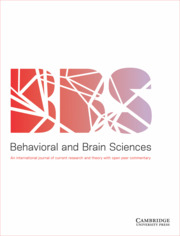Article contents
Précis of How monkeys see the world
Published online by Cambridge University Press: 19 May 2011
Abstract
Our book examines the mechanisms that underlie social behavior and communication in East African vervet monkeys. Our goal is to describe the sophistication of primate intelligence and to probe its limits. We suggest that vervets and other primates make good primatologists. They observe social interactions, recognize the relations that exist among others, and classify relationships into types. Monkeys also use sounds to represent features of their environment and compare different vocalizations according to their meaning. Monkeys may use abstract concepts and have motives, beliefs, and desires, however, their mental states are apparently not accessible: They do not know what they know. In addition, monkeys seem unable to attribute mental states to others: They lack a “theory of mind.” Their inability to. examine their own mental states or to attribute mental states to others severely constrains their ability to transmit information or to deceive one another. It also limits the extent to which their vocalizations can be called semantic. Finally, the skills that monkeys exhibit in social behavior are apparently domain specific. For reasons that are at present unclear, vervets exhibit adaptive specializations in social interactions that are not extended to their interactions with other species (although they should be).
Keywords
Information
- Type
- Target Article
- Information
- Copyright
- Copyright © Cambridge University Press 1992
References
- 75
- Cited by

